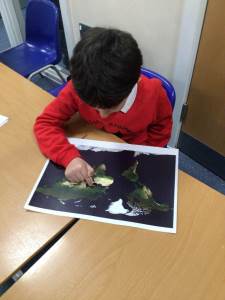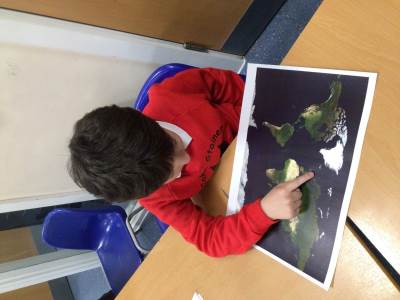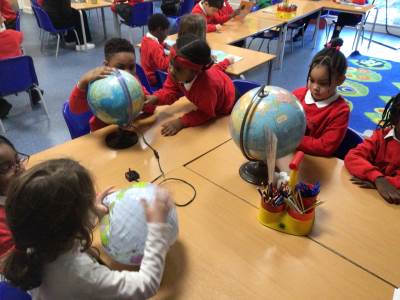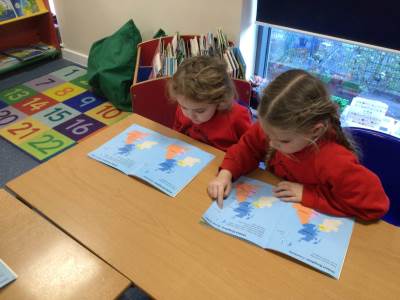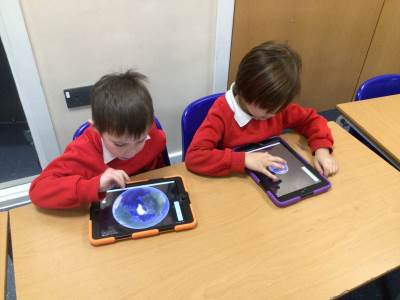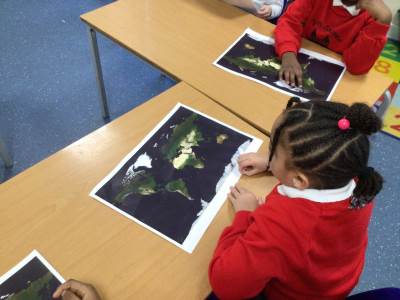Geography
At John Stainer, Geography is taught once per term. Teachers plan and deliver lessons that are part of our creative, cross-curricular approach to learning. During their work in geography, children develop, use and apply the National Curriculum key skills across a range of contexts. This is to encourage the children to show an interest in their immediate environment and that of the wider world.
Children will achieve those through the observation of the local environment, mapping, visitors, educational visits, globes, atlases, ICT resources (Digimaps) and workshops.
Map work
Within our curriculum, children are given time to build on the geographical vocabulary they have learned to deepen their geographical understanding of key concepts. This enables our children to transfer knowledge and make links between the different geographical concepts studied. For example, the concept of place is introduced in EYFS and further developed in KS1. By the end of KS2, children's understanding of place is further developed and they can speak confidently about where they are now and its link and relationship to the wider world in which we live.
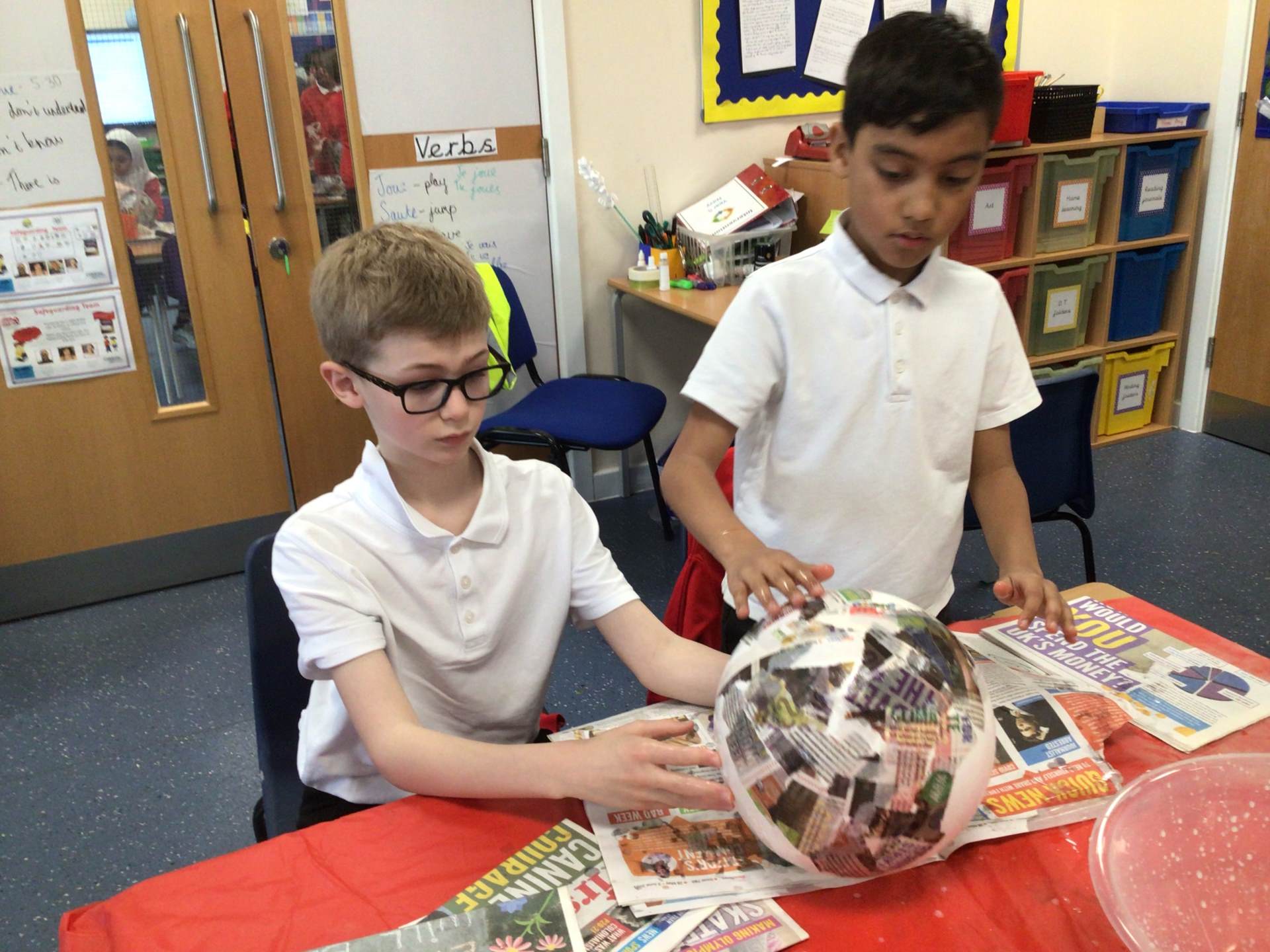
Key Stage 1:
Children’s geographical learning starts with identifying areas they are familiar with and then gradually gaining an understanding of how their local areas fit into the wider world. This process starts with learning about our school and local community, then widens to a study about London, the amazing city in which we live. Children's locational and place knowledge then further develops into comparing human and physical features of contrasting a non-European society with Britain (Jamaica and Brockley). Educational Visits play a key role in staff ensuring that the children get much exposure to the resources identified in this unit.
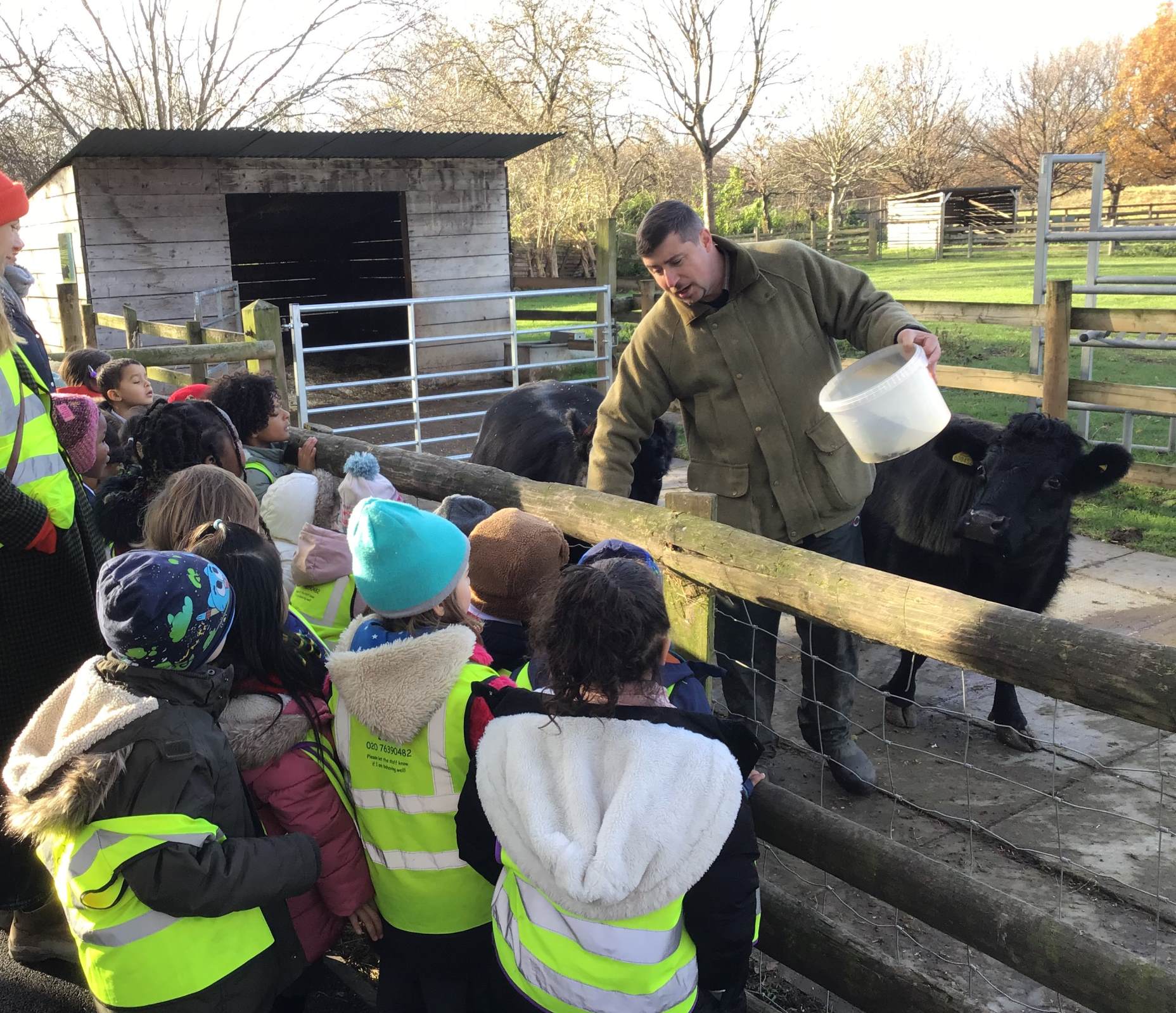
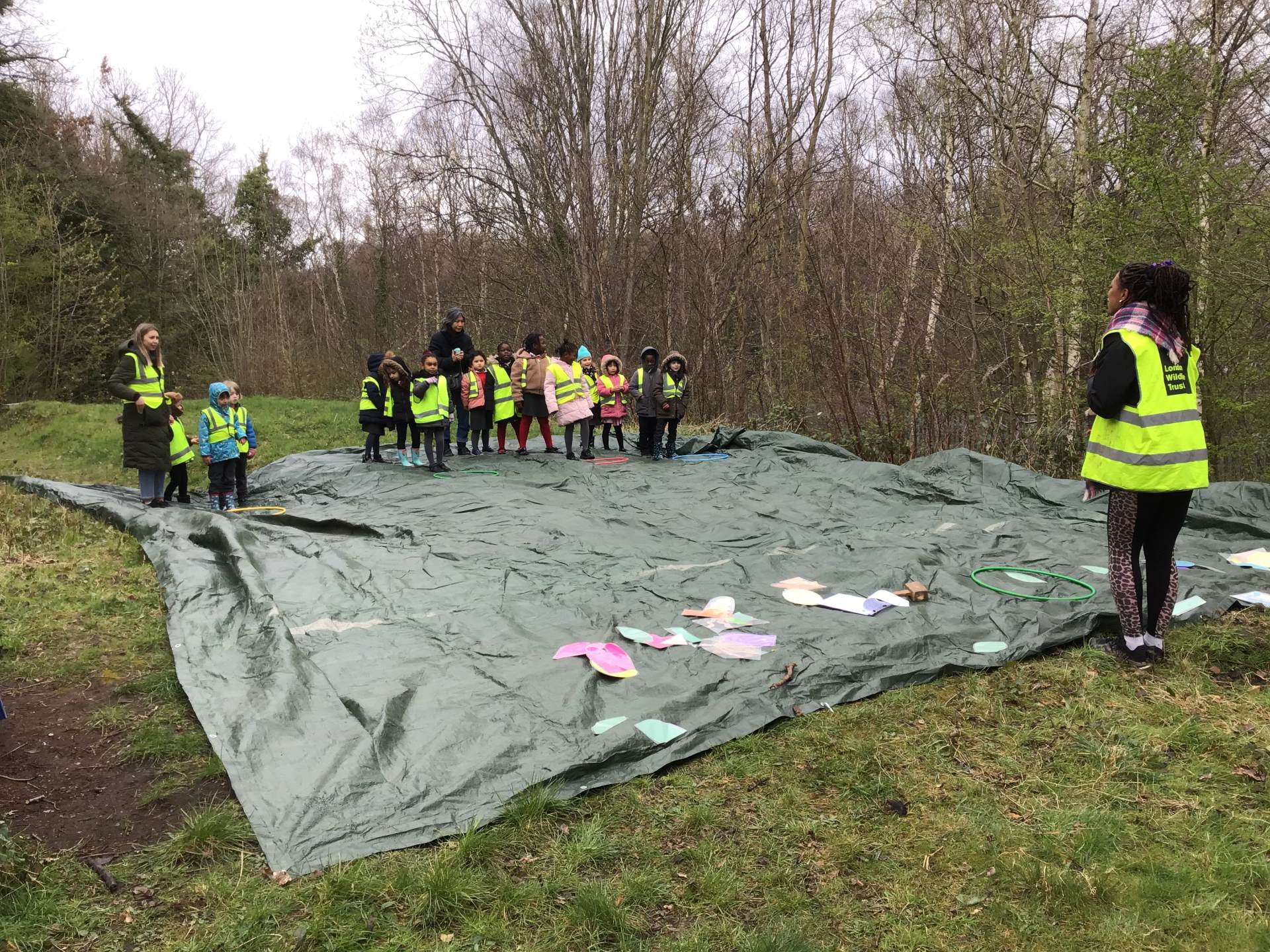
Key Stage 2:
Children’s progression in KS2 of locational and place knowledge moves from the local areas studied in KS1, to looking at differences and similarities between London and non-European countries in Year 2. Children will deepen their understanding of physical geography during their studies of volcanoes in Year 3 and rivers in Year 5, supported by visits to the Natural History Museum and Deptford Creek. Year 4 focus in depth on human geography, and the interaction between human actions and our planet.
Children learn to use directional language, read a map, use a compass, identify landmarks using grid references and use a range of digital mapping tools. Year 6 put their understanding to the test by using their orienteering skills on their School Journey.
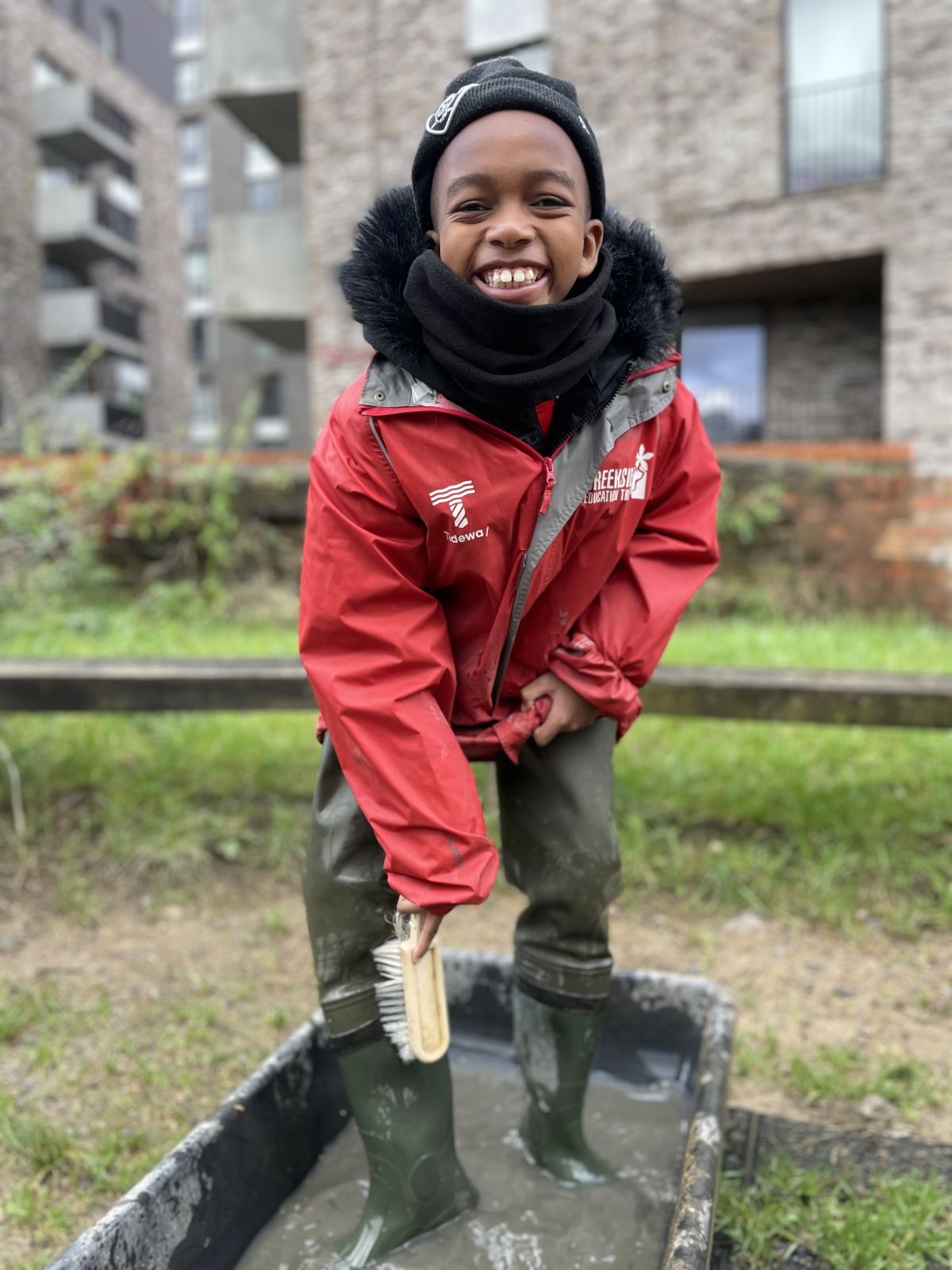
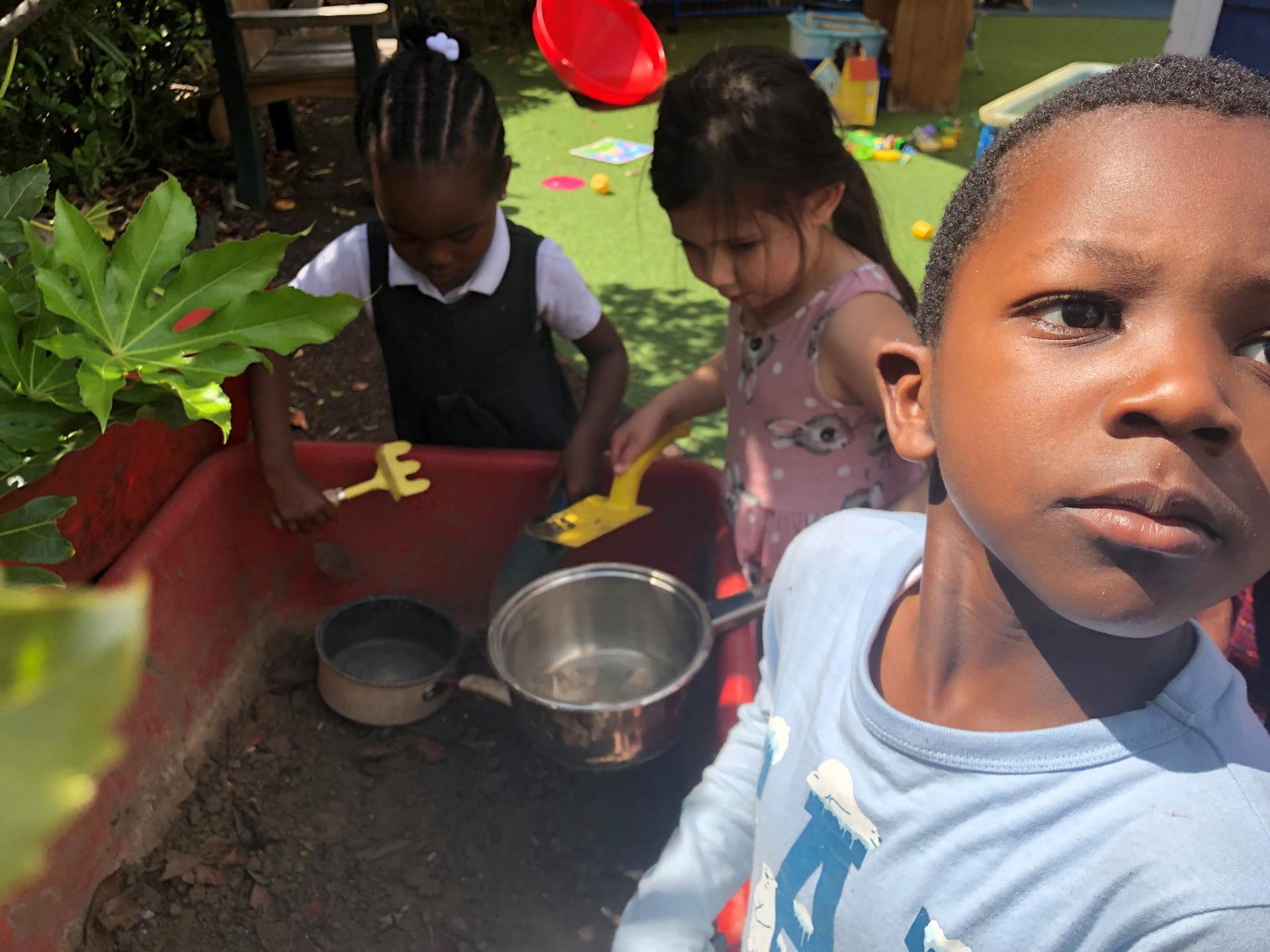 Within the Early Years Foundation Stage, Geography is included as part of Knowledge and Understanding of the World. The children learn to investigate similarities and differences, the local environment and cultures and beliefs, fostering the skills essential to developing geographical understanding. This is set out in the EYFS curriculum, our children need to observe, find out about, and identify features in the place they live, and the natural world; also to find out about their environment, and talk about those features they like and dislike.
Within the Early Years Foundation Stage, Geography is included as part of Knowledge and Understanding of the World. The children learn to investigate similarities and differences, the local environment and cultures and beliefs, fostering the skills essential to developing geographical understanding. This is set out in the EYFS curriculum, our children need to observe, find out about, and identify features in the place they live, and the natural world; also to find out about their environment, and talk about those features they like and dislike.
We believe that developing a strong understanding of people, places and global citizenship is an essential part of our children making sense of the wider world. We aim to develop pupils’ understanding of how their location relates to the wider world. We pride ourselves in inspiring children’s critical thinking, care for the environment and understanding of human impact on the planet; so that they can make informed choices that will positively impact the planet.
Intent
At John Stainer, our intent for our geography curriculum is to:
- Foster an interest, understanding and enjoyment of Geography.
- Enable children to gain knowledge of their locality and the processes which have changed their world.
- Encourage children to make comparisons between the environment and communities at a local, national and global level.
- Nurture an enquiring mind, the ability to investigate, analyse, evaluate and communicate findings and opinions.
- Develop specific geographical skills through the use of maps and atlases.
- Improve factual knowledge of geographical features throughout the world (oceans, continents)
- Enhance children’s sense of responsibility for the care of the Earth and its people.
- Deliver exciting first hand geographical experiences throughout outdoor learning and educational visits.
Implementation
To ensure effective implementation, leaders ensure that:
o An ambitious, broad and balance Geography curriculum is taught once each term (rotated with History).
o There is regular reflection on previously taught knowledge and skills, to check what children know and remember;
o Learning is supported by a wide range of resources, including educational visits
o Staff continue to develop children’s cultural capital with opportunities to deepen knowledge and understanding through educational visits, visitors etc
o There are regular reviews of previously taught knowledge to commit to long term memory
o Educational visits and visitors bring first hand experiences to the units being studied.
o Teachers have a good knowledge of the subject with the Geography Leader providing high quality CPD for staff
Impact
Our Geography Curriculum is well thought out and is planned to demonstrate progression. If children are keeping up with the curriculum, they are deemed to be making good or better progress. In addition, we measure the impact of our curriculum through the following methods:
- Ongoing formative assessments in class.
- A celebration of learning across the school through high quality displays in communal areas.
- Enjoyment of the subject’s delivery with ‘Pupil Voice’ sessions facilitated to discuss their learning in lessons and from educational visits.
- Learners are prepared for their next stage of education.
Beyond the Geography curriculum
We know that Geography lessons today are more important than ever. As our world becomes more globalised, it’s crucial for our children to understand the places on Earth and their relationship with each other. It provides context about where we live and how we relate to people around us. It sparks curiosity about other cultures and our behaviour. Below are some examples of how some children have extended their learning and involvement in Geography.
//www.youtube.com/embed/UtKnfIyXOnk#t=0.5
School, school where are you?
“We went around the whole area. I saw my house and other schools”.
“I saw the name of different roads and our postcode SE4”
The children used simple fieldwork and observational skills to study the geography of the school and its grounds and learn about the features of the surrounding environment
Home Learning Exhibition - Volcano
“We were learning about volcanoes and we had an exhibition. Our grown-ups came”
Children had to learn to describe and understand key aspects of physical Geography, which included learning about the structures of the earth's volcanoes.
Gorne Wood
Some of our children were involved in Gorne Wood project where they explored the woods, talked about its history, its love and use by the community. The children also explored the potential risk of losing this space. The aim of the project was to raise awareness about Gorne Wood in order to raise funds to purchase the woods so that the community will be able to use the land eg to learn about habitats, wildlife etc. The intention is for children and families to visit and enjoy the space.
The video below gives a brief history about Gorne Wood and how our children are involved.
//www.youtube.com/embed/3pPZxRGUIC4#t=0.5


